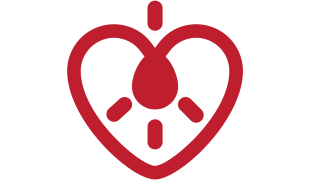- 7568
- 559
- 5
- 7
- 0
- Help Ukraine
About the solution
Karen contacted a designer and founded her own company: Down Designs. The company produces 18 different styles of jeans with elastic waistbands for easy dressing and shirts for men, women, teens and children.
"When people with Down syndrome are forced to wear clothes from everyday stores, the clothing makes them look different. All you see is the Down syndrome. When they wear our pants and they fit and they look and feel more comfortable, they can be confident in themselves. You don't see the Down syndrome anymore", the entrepreneur explained.
These clothes can be bought online. Karen intends to keep working on designing more styles and sizes.
More info: https://downsdesignsdreams.org
Adapted from: http://bit.ly/2FmjJY8
This solution shall not include mention to the use of drugs, chemicals or biologicals (including food); invasive devices; offensive, commercial or inherently dangerous content. This solution was not medically validated. Proceed with caution! If you have any doubts, please consult with a health professional.
DISCLAIMER: This story was written by someone who is not the author of the solution, therefore please be advised that, although it was written with the utmost respect for the innovation and the innovator, there can be some incorrect statements. If you find any errors please contact the patient Innovation team via info@patient-innovation.com
-
-
464
-
0
-
6501

CAPR-Style – Adaptive clothing for disabled people
CAREGIVING
(SELF)-CARE: DRESSING: Dressing independently.
Incontinence
Cerebral Palsy
Cervical spinal cord injury/Tetraplegia
Body-Worn solutions (Clothing, accessories, shoes, sensors...)
Strategy/Tip
Promoting self-management
Managing Neurological Disorders
Promoting inclusivity and social integration
Recovering from Traumatic Injuries
Preventing (Vaccination, Protection, Falls, Research/Mapping)
Caregiving Support
Medical Genetics
Neurology
Pediatrics
Rheumatology
United Kingdom
-
-
-
955
-
0
-
20822

System to track autistic children
CAREGIVING
COMMUNICATION: Communicating, whether by speaking, listening, or other means
Social interaction
Autism
Assistive Daily Life Device (to help ADL)
Body-Worn solutions (Clothing, accessories, shoes, sensors...)
App (Including when connected with wearable)
Anxiety
Difficulty concentrating or making decisions
Social withdrawal or isolation
Restlessness or feeling slowed down
Loss of interest or pleasure in activities (anhedonia)
Promoting self-management
Managing Neurological Disorders
Preventing (Vaccination, Protection, Falls, Research/Mapping)
Caregiving Support
Child and Adolescent Psychiatry
Medical Genetics
Neurology
Pediatrics
Psychiatry
Israel
-
-
-
542
-
0
-
7382

Slacks with zippers on both sides for patients who have to stand up in public
CAREGIVING
(SELF)-CARE: DRESSING: Dressing independently.
Amyotrophic Lateral Sclerosis
Strategy/Tip
Body-Worn solutions (Clothing, accessories, shoes, sensors...)
Tremors
Muscle cramps or spasms
Stiffness or rigidity (difficulty moving)
Muscle weakness
Trouble with fine motor skills (e.g., writing, buttoning clothes)
Sleep disturbances
Numbness or tingling in the extremities
Restoring mobility
Managing pain
Promoting self-management
Managing Neurological Disorders
Promoting inclusivity and social integration
Preventing (Vaccination, Protection, Falls, Research/Mapping)
Caregiving Support
General and Family Medicine
Medical Genetics
Medical Oncology
Neurology
Orthopedics
Physical Medicine and Rehabilitation
Rheumatology
United States
-
 en
en